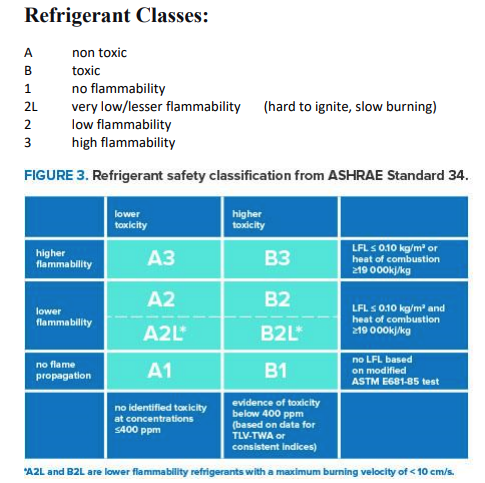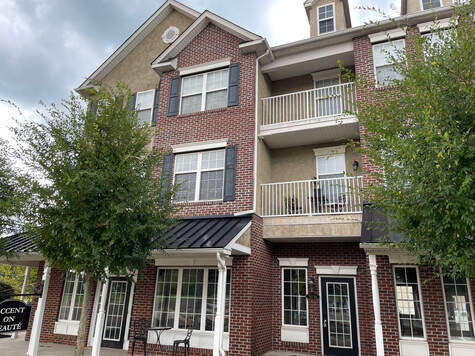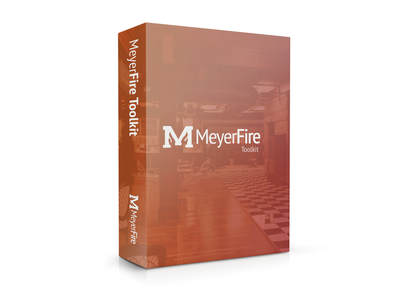|
How have people been addressing the IFC (2021) Section 907.5.2.1.3.2 requiring 520Hz single/multiple station smoke alarms in residential units being addressed?
It sounds like there are no 520 Hz smoke alarms available on the on the market meet these requirements. We have a roughly 300-unit building and the AHJ is pushing us to put smoke detectors with sounder bases in each unit instead of 120v smoke alarms. We know this could be done, but the cost impacts would be substantial and the future maintenance and inspections in the building would be very difficult. This is the first time we've seen this be pushed by an AHJ, so looking for information on how others have handled this. Sent in anonymously for discussion. Click Title to View | Submit Your Question | Subscribe
6 Comments
I have a 5-story building going up with 4-story residential over 1-story parking.
Can the residential portion be NFPA 13R? Sent in anonymously for discussion. Click Title to View | Submit Your Question | Subscribe Can an elevator hoistway connecting two adjacent stories be considered a "convenience opening" and avoid a fire resistance rating altogether based on NFPA 5000?
Sent in anonymously for discussion. Click Title to View | Submit Your Question | Subscribe Are sprinklers required for an H-3 Occupancy, retail fireworks (1.4g class) if less than 125lb?
IBC Section 415.1 states only need a automatic sprinkler if in excess of 125lb (25% of net weight of package fireworks). But, in Chapter 10 Table 1006.2.1, regarding means of egress, it says Not Permitted regarding H-3 units with no sprinkler system. Any help here is appreciated. Thank you! Sent in anonymously for discussion. Click Title to View | Submit Your Question | Subscribe We have a sprinkler protected facility where we have a corridor that exceeds 50-ft in length.
At the end of the corridor is a door that leads to the apparatus bay. It's not a means of egress leading to an exit (higher hazard on the other side). The required means of egress are at other locations in the facility. Is this considered a dead end corridor under NFPA 101? In all the examples I've found on the topic, the end is truly dead-end with no means of exiting. What's your take on this? Thanks in advance. Sent in anonymously for discussion. Click Title to View | Submit Your Question | Subscribe We have an airline opening a training facility in our jurisdiction. The building is fully sprinklered and has a fire alarm.
They wish to install a static airplane fuselage for training airplane cabin personnel. This would be a functioning fuselage with standard airplane doors with ramps. Has anyone had an experience with this? This is a fully sprinklered building so our thinking is the fuselage needs sprinkler coverage inside. Is this correct? This building has a fire alarm system so our thinking is the fuselage needs notification devices. Is this correct? The fuselage doors do not meet the code requirement for egress doors (locks, swing, etc), how is this addressed? Thanks in advance. Sent in anonymously for discussion. Click Title to View | Submit Your Question | Subscribe From the 2023 Edition of NFPA 855, Section 14.6.4 "Outdoor storage areas with an aggregate area greater than 400 sqft (37.1 sqm) shall be provided with a fire alarm system activated by a radiant-energy detection system with occupant notification installed in accordance with NFPA 72."
How do you interpret this requirement if there is outdoor storage of Li-Ion batteries without any sort of structure and 300' from any building, and there are no occupants to notify? Thanks for your help! Sent in anonymously for discussion. Click Title to View | Submit Your Question | Subscribe How do you size a water storage tank for fire flow when the city supply is significant, but not sufficient for Fire Flow?
For instance, if I have 1,500 gpm available from the city at 20 psi, but I need 2,000 gpm for Fire Flow, is the water storage tank sized for 500gpm for the required duration? Or do I need to size the tank for the entire 2,000 gpm minus reliable refill? Sent in anonymously for discussion. Click Title to View | Submit Your Question | Subscribe I have a canopy that is completely detached from a building (school) and is an entirely a separate structure. The canopy has no walls and is not in an egress pathway. The canopy is used for bicycle storage and bicycles are not stored overnight.
Is there any code path to require sprinklers underneath this canopy? If not, what is the code path to omit fire sprinkler protection? Thanks for your help! Sent in anonymously for discussion. Click Title to View | Submit Your Question | Subscribe Are there any universal, non-AHJ-specific requirements for permitting sprinkler alterations and/or repairs?
I have been told that “code” requires a permit to be pulled for any and all sprinkler alterations. Upon further questioning, I determined that this came from a fire marshal showing my colleague something in the IBC once, but, even if that were true, wouldn’t that still require adoption and implementation by a jurisdiction? Sent in anonymously for discussion. Click Title to View | Submit Your Question | Subscribe Does a security grill utilized in school corridors required to be tied into the fire alarm?
If so, the concept should be that the grill in the closed position should return to the open position when fire alarm is activated, correct? Sent in anonymously for discussion. Click Title to View | Submit Your Question | Subscribe What is the difference between the terms "permitted" and "required" in NFPA standards?
For example, a later chapter will say that "Smokeproof enclosures complying with 7.2.3 shall be permitted.", which will point you back to: 7.2.3.1 General. "Where smokeproof enclosures are required in other sections of this Code, they shall comply with 7.2.3, unless they are approved existing smokeproof enclosures." The "parent" section uses the phrase "where 'required' elsewhere", while the occupancy-specific section uses "permitted", as in allowed to be required, without specifically requiring it. This feels very cyclic. Am I directed back to the separation requirements of Chapter 6, or is there something buried in the occupancy chapter that I am not seeing? Thanks in advance. Sent in anonymously for discussion. Click Title to View | Submit Your Question | Subscribe Can window sprinklers be used to protect internal glazing in partitions in lieu of fire rated glass partition?
The life safety engineer has requested to provide sprinklers on internal fully glazed partitions to save the cost of fire rated glazed partition. Not for the entire hospital, only some internal partitions in a hospital for glazing with 1-hour fire rated ones. Although couldn't find anything in the NFPA 13 that support his request as I know this is valid only for atriums, am I right? I appreciate the help and response as always. Sent in anonymously for discussion. Click Title to View | Submit Your Question | Subscribe Is there any code that requires that fire alarm coverage be provided in areas that are in the process of major modifications, including asbestos abatement work?
We have a project which will undergo major asbestos abatement and are getting pushback that the fire alarm system must remain operational in the space during the renovation work. Sent in anonymously for discussion. Click Title to View | Submit Your Question | Subscribe What design considerations (if any) need to be taken into account for the new refrigerant changes that are coming up for the HVAC industry (slightly flammable or highly flammable refrigerants)?
Are there any code updates, guidelines reference materials etc. Would this possibly affect hazard classifications? Sent in anonymously for discussion. Click Title to View | Submit Your Question | Subscribe Typically when I work on campus/multi-building systems, I am using a single underground main and splitting off to each building. Since you don't have to consider a multiple building fire problem, we have typically worked on the hydraulically most-remote building for underground sizing and use wall PIVs to offer individual building shutoffs, with FDCs on the individual buildings.
I'm getting challenged on "what allows this in code?" It's mostly a question of - where is the limit on how long a loop can be? I'm looking at this from a sprinkler design perspective and whether each individual building's sprinkler system is able to perform hydraulically. Is the limit for the length/layout/sizing of a campus underground loop simply the more demanding of Fire Flow or sprinkler system feeds? Is there a code basis for this? Thanks in advance. Sent in anonymously for discussion. Click Title to View | Submit Your Question | Subscribe What are the deciding factors or requirements on when a deluge system would be required on a stage to separate the stage from the audience?
This would be for the proscenium opening protection. Sent in anonymously for discussion. Click Title to View | Submit Your Question | Subscribe Does code allow a fire sprinkler riser to be installed in a rated stairwell enclosure?
Sent in anonymously for discussion. Click Title to View | Submit Your Question | Subscribe Has anyone been asked to or required to provide sprinkler protection for at grade parking with PV panels overtop?
I've been looking online for what has been done in other jurisdictions but I can't find much. There is a lot of discussion about whether PV panels constitute a roof or not for parking garages, but my question is more along the lines of has there been research done to determine if the sprinklers can be expected to activate properly based on pitch/spacing? Thanks in advance. Sent in anonymously for discussion. Click Title to View | Submit Your Question | Subscribe For NFPA 13D systems which are "multipurpose" or "flow-through" combination sprinkler and domestic systems, it has been troubling me as a fire code official not knowing the maximum length that a dead-end or arm-over section of pipe can be in order to be deemed safe from contaminating the potable water in a home.
NFPA doesn't seem to weigh in on this, that I know of. What is the maximum length for a dead-end or arm-over section of pipe in a combined sprinkler/domestic system? I've been searching for studies, contacting other AHJs, asking plumbers; but no one can give a definitive answer. From what I understand, there are no documented cases of illness from residential sprinkler systems, but I would rather not rely on this as a way to measure safety. I've seen a few sources say (and show) that water only circulates into the dead end at 1.5 x the diameter of the pipe going across. So if water isn't circulating, it seems like there's a risk for contamination. If contamination is not a risk for whatever reason, why have any maximum at all? I would love to get to the bottom of this and I look forward to hearing from others who have a deeper understanding. Thank you. Sent in anonymously for discussion. Click Title to View | Submit Your Question | Subscribe We are working on a new electric car factory. Under the 2018 IBC, it's classified as an F-2 occupancy. Earlier we had provided ESFR sprinklers in these buildings.
Since there is no specific requirement for smoke removal for an F-2 occupancy, we want to provide standard response or quick response sprinklers instead of ESFR, by classifying parts of the building as Ordinary Hazard Group 2 (OH2) in NFPA 13. Is this reasonable for all areas? Production areas? Would an OH2 classified space require smoke removal? Thanks in advance. Sent in anonymously for discussion. Click Title to View | Submit Your Question | Subscribe I purchased a commercial condo recently. It’s been vacant and unfinished since 2013. It’s a shell, picture is below. It has 5 residential condos on top and 5 commercial condos on first floor, in a 3 story building. All residential units were sold and have been occupied since. One commercial unit was also built and has been occupied as a salon with a U & O. There are no sprinklers, no fire room. They were going off of 2006 IBC code.
My architect prepared stamped plans with no sprinklers using the separated building scenario. It has a 2-hour horizontal separation, 3-5 hour vertical, no access to second floors. The plan was denied for sprinklers to be installed. Now, I certainly understand safety, but it’s almost impossible to install now after 12 years. Can you help me decipher mixed use B (1st floor) and R-3 (2nd and 3rd one unit)? Is this approach allowed by code, or is the code official correct? Is a self-contained fire area allowed to be its own building? Please help, thanks. Sent in anonymously for discussion. Click Title to View | Submit Your Question | Subscribe Does anyone have experience in designing suppression for a warehouse that will store boats on racks?
I will appreciate any information. Which standard would even be applicable? Do we treat them like high-piled combustible storage per Chapter 32 of the IFC? What will be target hazard considering the fuel in the boat? Is there any limitation that how much they can keep inside the boat? Thanks for the input on this; I'm having a hard time on where to get started. Editor's Note: A Fire Protection Research Foundation on Marina and Boatyard Indoor Rack Storage Sprinkler Protection has been submitted and can be viewed here: PDF LINK Sent in anonymously for discussion. Click Title to View | Submit Your Question | Subscribe I am working on a permit for a 1,500 sqft (750 sqft/ floor) new construction live/work building R-2 in California (2022 California Building Code, which is based on IBC). It has a 1-bedroom apartment above with only "work" space below.
The building code allows for Live/Work R-2 to be protected with NFPA 13R. In the building code the only uses not allowed in the "work" area of Live/work are Group H & S. Where all of this gets hazy is that I interpret the code as 13R being allowed to protect this whole building regardless of use except for uses S or H. For instance would a small pizza joint be allowed in this "work" space as long as it did not have special hazards that would require an ANSL or NFPA 13 system? Or is Live/Work with 13R just purely limited to office, barber, professional space, etc.? From multiple angles I am trying to understand the true limits of Live/work when there are no local ordinances that limit the "work" space use except S & H. Thanks in advance. Sent in anonymously for discussion. Click Title to View | Submit Your Question | Subscribe We have a storage building that is non-sprinklered, it only has fire alarm. The ceiling height in some areas of the building with storage of tires is up to 10-ft in height, and others up to 15-ft in height.
How many tires can be stored? Is there a limit to the amount of storage? Does storing on tread or on side matter? Thanks in advance. Sent in anonymously for discussion. Click Title to View | Submit Your Question | Subscribe |
ALL-ACCESSSUBSCRIBESubscribe and learn something new each day:
COMMUNITYTop June '24 Contributors
YOUR POSTPE EXAMGet 100 Days of Free Sample Questions right to you!
FILTERS
All
ARCHIVES
July 2024
PE PREP SERIES |
MeyerFire
- Blog
- Forum
-
THE TOOLKIT
- SUBMIT AN IDEA
- BACKFLOW DATABASE*
- CLEAN AGENT ESTIMATOR*
- CLOUD CEILING CALCULATOR
- DOMESTIC DEMAND*
- FIRE FLOW CALCULATOR*
- FIRE PUMP ANALYZER*
- FIRE PUMP DATABASE*
- FRICTION LOSS CALCULATOR
- HANGER SPACER*
- IBC TRANSLATOR*
- K-FACTOR SELECTOR*
- NFPA 13 EDITION TRANSLATOR ('19 ONLY)
- NFPA 13 EDITION TRANSLATOR ('99-'22)*
- LIQUIDS ANALYZER*
- OBSTRUCTION CALCULATOR
- OBSTRUCTIONS AGAINST WALL*
- PITOT CONVERTER
- PLUMBING FIXTURE COUNTS
- QUICK RESPONSE AREA REDUCTION
- REMOTE AREA ANALYZER*
- SPRINKLER DATABASE*
- SPRINKLER FLOW*
- SYSTEM ESTIMATOR*
- TEST & DRAIN CALCULATOR
- THRUST BLOCK CALCULATOR
- TRAPEZE CALCULATOR
- UNIT CONVERTER
- VOLUME & COMPRESSOR CALCULATOR
- WATER STORAGE*
- WATER SUPPLY (US)
- WATER SUPPLY (METRIC)
- UNIVERSITY
- PE Exam
- LOGIN
- PRICING
- OUR CAUSE

MeyerFire.com is a startup community built to help fire protection professionals shine.
Our goal is to improve fire protection practices worldwide. We promote the industry by creating helpful tools and resources, and by bringing together industry professionals to share their expertise.
MeyerFire, LLC is a NICET Recognized Training Provider and International Code Council Preferred Education Provider.
All text, images, and media Copyright © 2016-2024 MeyerFire, LLC
We respect your privacy and personal data. See our Privacy Policy and Terms of Service. The views, opinions, and information found on this site represent solely the author and do not represent the opinions of any other party, nor does the presented material assume responsibility for its use. Fire protection and life safety systems constitute a critical component for public health and safety and you should consult with a licensed professional for proper design and code adherence.
Discussions are solely for the purpose of peer review and the exchange of ideas. All comments are reviewed. Comments which do not contribute, are not relevant, are spam, or are disrespectful in nature may be removed. Information presented and opinions expressed should not be relied upon as a replacement for consulting services. Some (not all) outbound links on this website, such as Amazon links, are affiliate-based where we receive a small commission for orders placed elsewhere.















 RSS Feed
RSS Feed
